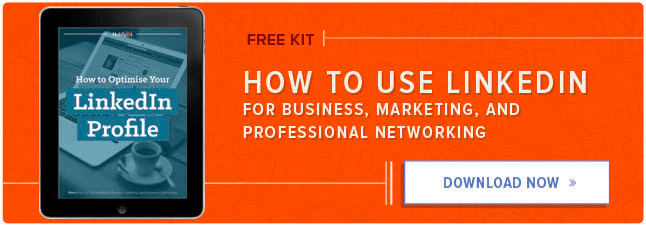
LinkedIn is best known as the world’s largest professional network — in other words, users aren’t there to look at cat memes or read celebrity gossip. Instead, they’re looking to connect with people in their industry, network, keep up with industry news, and look potential job opportunities.
For marketers, paying attention to this difference in user purpose is key when building your social strategy. The more looped in you are on what people are talking about, the easier it becomes to use that information to craft helpful, targeted content. And that’s where this data study comes in.
My company, ClearVoice, recently conducted a study that provides data and insight specifically on the most popular posts on LinkedIn. The data was generated by Content Studio — our comprehensive index of the most popular content and influencers on the web — and includes insights from the third quarter of 2016.
Want to build these trends into your LinkedIn strategy? I’ll walk you through them below.
Top 20 Most Common Phrases on LinkedIn
Here are the top 20 most common phrases in headlines used on LinkedIn, followed by the number of shares that phrase received in the third quarter of 2016:
- Successful People: 91,729
- Right Now: 88,182
- First Time: 76,578
- Job Interview: 72,357
- Best Employees: 70,964
- Best Reasons: 68,167
- Employees Quit: 66,773
- Finally Offering: 61,468
- Science Says: 53,756
- Study Finds: 43,810
- Next Big: 41,740
- People Want: 47,808
- Helps One: 31,433
- Work Helps: 31,433
- Crazy Hours: 31,319
- Stop Touting: 31,113
- Touting Crazy: 31,288
- Make Better: 31,113
- Now Available: 31,019
- Announce Shares: 30,309
How to Put the Data to Work:
To make the most of this insight, you’ll want to build a LinkedIn-specific strategy with these popular phrases in mind. To help you navigate that process, check out the following best practices and tips:
- Use the phrases (naturally) in your titles. According to HubSpot, “How Successful People Stay Calm” by Dr. Travis Bradberry was once one of the most-shared LinkedIn posts of all time, with nearly 2,000 shares. Notice it includes that popular phrase “successful people” in a natural way.
- Rework existing titles. Your content doesn’t have to be new for you to incorporate these findings. Let’s say you want to republish part of your whitepaper, titled “SEO Strategies for 2016,” on LinkedIn. Instead of publishing as is, rework that title to include a popular search phrase — for example: “New SEO Strategies to Try Right Now.”
- Put quality first. These phrases won’t increase shares if you don’t have many connections or produce poor content. In fact, there are plenty of articles that use these phrases and still don’t perform. To avoid falling into that trap, use these phrases to improve the reach of your high-quality content.
Top 20 Topics Shared on LinkedIn
ClearVoice also looked at the top 20 topics LinkedIn users share most often, which offers a snapshot of the current content-sharing landscape. As these keywords tend to fluctuate in real time based on what’s going on in the news and in pop culture, this is an area you will want to check regularly.
Here are the top 20 topics found in the titles of the most-shared content on LinkedIn:
- Social Media: 323,535
- Real Estate: 115,577
- Big Data: 113,750
- Internet of Things: 78,418
- Artificial Intelligence: 71,578
- Virtual Reality: 71,108
- Machine Learning: 68,334
- Content Marketing: 66,951
- Performance Evaluation: 60,841
- Data Center: 50,928
- Customer Experience: 50,267
- Pokémon Go: 48,670
- Emotional Intelligence: 46,887
- Digital Transformation: 46,186
- Open Source: 43,558
- Digital Marketing: 42,525
- 5-hour rule: 40,423
How to Put the Data to Work:
Start by looking at the topics on our list and note which ones are related to your industry. Don’t try to create content on topics that do not make sense for your brand.
For example, Pokémon Go was extremely popular with the general population in Q3, and not surprisingly, marketers found ways to use it to their advantage — this related article managed to garner over 1,000 shares.
Let’s look at three other examples that highlight how marketers can put this data to work:
- Consider pairing popular topics with news. This post combined a popular topic (“social media”) with a recent news story and earned 1,000 likes in just one day. This is particularly impressive when you consider most LinkedIn users don’t go to the platform looking for celebrity news updates.
- Focus on popular topics that are related to your field. This post (about “machine learning,” which is the #7 most popular topic on LinkedIn) earned 259 shares.
- Try combining popular topics in your title. Caveat: When it makes sense. This post combined “machine learning” and “big data,” related fields which both made the most popular topics list.
How to Pair Phrases From Each List
Pairing the two data sets together will provide you with powerful headlines. For example, “How Successful People Use Social Media” or “Content Marketing Strategies that Work Right Now.”
Here are two examples of posts that used the combined power of the most popular phrases and the most popular topics:
- “Want to Make Better Hires? Stop Over-Policing Employee Social Media.” In addition to using the popular phrase “make better,” the title of this post also includes the popular topic “social media.”
- “Why should every marketer be excited by Virtual Reality right now.” This post is almost a triple whammy, using “marketer,” “right now,” and “virtual reality.” If they had added “digital” in front of “marketer,” it would have included one popular phrase and two popular topics. Either way, the double whammy seems to have worked — this post has received 345 likes and 85 shares in four months.
Ready to Boost Your LinkedIn Content Strategy?
Use this data as a starting point to create fresh, useful content that your LinkedIn audience will want to read and share. And while including these phrases in your headline or writing about these topics doesn’t guarantee high shares counts, it will give you a clear advantage, so use the information wisely.
What success have you had with including any of these terms or topics in your content? Let us know in the comments below.




